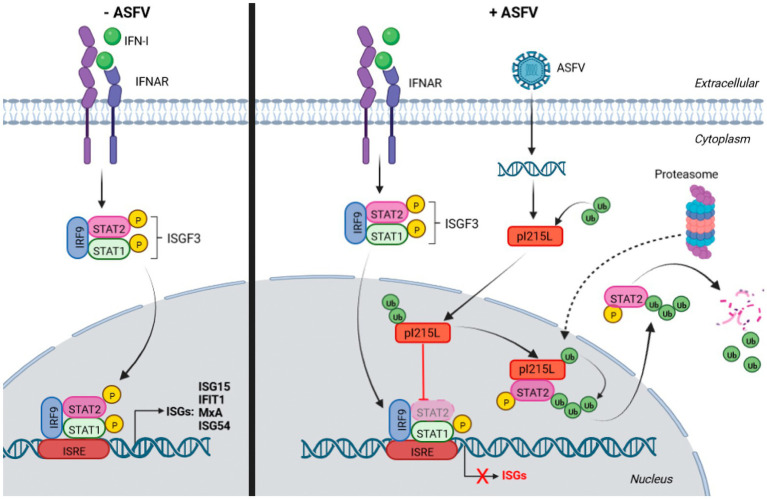Figure 7.
Schematic representation of the model of action of pI215L inhibiting the JAK/STAT pathway via STAT2 degradation. On the right side, the activation of the JAK/STAT signaling pathway upon IFN-I stimulus in a non-infected cell is depicted: STAT1 and STAT2 are phosphorylated, together with IRF9 conform the ISGF3 complex, which translocates to the nucleus to act as a transcription factor to induce ISGs transcription. The right side shows the activation of the JAK/STAT pathway in an ASFV-infected cell, where the viral protein I215L interacts with STAT2 in the nucleus, promoting its ubiquitination and degradation, thus preventing ISGF3 complex formation and therefore the transcription of the genes involved in the response to IFN-I. STAT2 degradation by the proteasome has been depicted in the cytoplasm, although the hypothesis that the proteasomal machinery translocates into the nucleus to carry out the degradation of ubiquitinated STAT2 (dashed arrow), cannot be excluded. Biorender program was used for the realization of this illustration.

